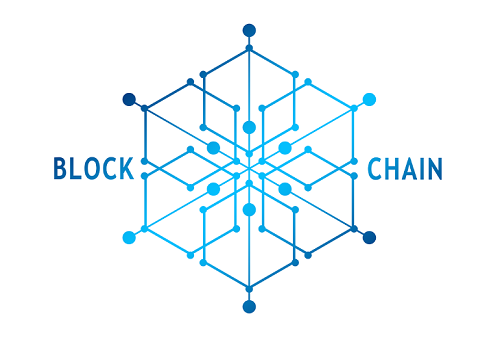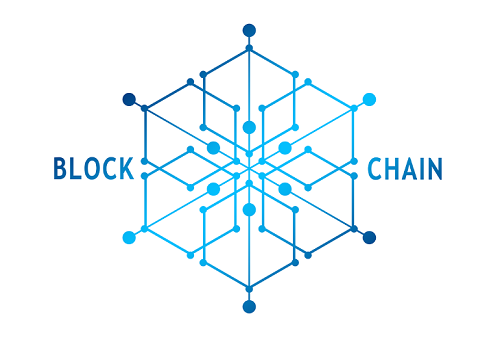


Image Source: Pixabay
Key elements to watch on the Ethereum network roadmap
2024 is shaping up to be an action-packed year for the Ethereum network, starting with the Dencun hard fork.
On Dec. 30, 2023, Ethereum co-founder Vitalik Buterin shared the Ethereum roadmap for 2024, pointing out that there are only a handful of minor adjustments compared to last year.
In a thread on the X social network, Buterin detailed in a series of charts and diagrams revealing that the continued focus for Ethereum in 2024 is on six main components – the Merge, the Surge, the Scourge, the Verge, the Purge and the Splurge.
The Merge was highlighted as a key section on the roadmap, aiming to maintain a simple and resilient proof-of-stake (PoS) consensus. It took place in September 2022 integrating the Ethereum mainnet with the PoS blockchain the Beacon Chain.
The Surge targets 100,000 transactions per second across Ethereum and layer 2 networks and aims to enhance the blockchain’s scalability. Read More
Here’s When to Expect the Jupiter JUP Airdrop for Solana DeFi Users
Jupiter’s airdrop draws nearer and nearer. Here’s when the Solana DEX aggregator plans to launch JUP to the community.
It can be tough to keep track of all the token airdrops on the horizon, but there’s one of particular interest to Solana users: the launch of JUP, the token of decentralized exchange (DEX) aggregator Jupiter.
We previously heard that the Jupiter team was targeting a January launch, but now there’s a narrower window if you'd like to plan accordingly. On Tuesday, pseudonymous founder Meow said to expect the token airdrop during the last week of the month following a fair bit of additional prep in what it has dubbed “Jupuary.”
“Given the extensive amount of work, we expect launch day to be in the 4th week of Jupuary,” Meow tweeted. “Let's work on it together.” Read More
Dymension Is the Latest Airdrop for Solana, Ethereum, and Cosmos Users
More than a million crypto users and NFT owners across chains can now claim DYM tokens in Dymension’s airdrop.
It’s a new year, but airdrop season is continuing at full force into 2024. The latest: Dymension, a network for deploying app chains called “RollApps,” has revealed a token drop for more than a million crypto users across various chains and projects.
Dymension is a layer-1 blockchain built on Cosmos and the inter-blockchain communication protocol (IBC) to enable connections across various rollup scaling networks. “Dymension standardizes rollups with IBC, similar to how tokens were standardized with ERC,” Dymension wrote on Twitter (aka X), referring to Ethereum’s token standards.
The network lets RollApp creators choose which virtual machine and token to use, and can publish data to external chains like Celestia or Avail. Dymension CEO and co-founder Yishay Harel told Decrypt that the L1 network uses Ethereum Virtual Machine (EVM) addresses. Read More
Etherscan acquires Solana block explorer Solscan amid SOL rally
Etherscan said its Solscan acquisition was a “collaborative merging” to help the firm expand its blockchain data services across multiple networks.
Etherscan, which operates an explorer for the Ethereum blockchain, is starting the year with new acquisitions related to the Solana blockchain.
On Jan. 3, Etherscan officially announced the acquisition of Solscan, a leading block explorer for the Solana ecosystem. It said that the acquisition is a “collaborative merging” that continues Etherscan’s efforts to expand blockchain data services across multiple networks.
Founded in 2021, Solscan has reportedly served over three million monthly users, while its community on X (formerly Twitter) has amassed more than 23,000 subscribers at the time of writing. The Solscan block explorer has many features familiar to users of Etherscan, including detailed address, token, transaction data, APIs, dashboards, and nonfungible tokens' (NFT) metadata. Read More

Markethive Leading The Way In Web 3 Social & Market Media
Web 3.0 is the next generation of the internet, which people envision will be more decentralized and permissionless. One that's built on decentralized protocols, where users help with content creation and the governance of the web itself. They also have the ability to own a part of the network, so you can think of it as a Read-Write-Own Internet.
There are already several technologies that could serve as the backbone for a Web 3 world. Most point to blockchains like Elrond, Cardano, or Ethereum, for example, but other distributed technologies like IPFS can also be used to decentralize networks.
Thousands of dApps (decentralized applications) are already being built in the Web 3 environment. These often include native tokens to add value to the application to those who hold the tokens. These native crypto assets allow those who participate in the network to share in the value generated from it.
Web 3 promises a decentralized alternative where we are all users, owners, and developers. This quote from Fabric Ventures sums it up beautifully,
“Web 3.0 enables a future where distributed users and machines are able to interact with data, value, and other counterparties via a substrate of peer-to-peer networks without the need for third parties—the result: a composable human-centric & privacy-preserving computing fabric for the next wave of the web.” Read More
Solana NFT Sales Skyrocket, Topping Ethereum in Monthly Volume for First Time
Rising momentum around Solana catapulted NFT sales above Ethereum in December, according to data from CryptoSlam.
Solana’s surging fortunes of late have produced a surprising result in the NFT market: monthly sales volume of NFTs on the network beat that of NFTs on Ethereum in December 2023, for the first time ever.
According to data from analytics platform CryptoSlam, Solana NFT sales tallied about $366.5 million worth in December, compared to $353.2 million on Ethereum. CryptoSlam’s “organic” sales figures exclude suspicious trades marked as “wash trading,” with about $381 million worth of Ethereum sales excluded and just $10.1 million worth of Solana sales pulled out. Read More
Steamboat Willie's Mickey Mouse Goes NFT After Entering Public Domain
One of the first depictions of the Mickey Mouse character has finally entered the public domain, and it is now immortalized in a non-fungible token collection. A limited edition of 2,000 NFTs featuring the famous mouse in one of its first animated shorts, “Steamboat Willie,” was minted during New Year’s Eve to commemorate the occasion.
Steamboat Willie’s Mickey Mouse Celebrated in NFT Collection:
The cryptocurrency community has made Disney’s Mickey Mouse one of the pop culture characters that already have their non-fungible tokens (NFT) collections. One of the first depictions of Mickey Mouse, as the character was seen in a 1928 animated short titled “Steamboat Willie,” is now part of an Ethereum NFT collection launched by Truth co-founder Alexander Taub. Read More
Significant Crypto Hacks in December 2023, with Orbit Bridge Exploit Leading the Surge
Among the history of cryptocurrency thefts, December 2023 stands out as a particularly noteworthy month. This is mostly attributable to a huge exploit that occurred on the Orbit Bridge. On January 1, the blockchain security company PeckShield said that the $81.5 million vulnerability on Orbit Bridge marked December the fifth-largest month for hacks in the year. This month was the fifth-highest month for hacks overall.
On the evening of New Year's Eve, a significant assault was launched against the Orbit Bridge, which is an essential component of the Orbit Chain ecosystem. This illegal breach resulted in the loss of the equivalent of $81.5 million worth of cryptocurrency, making it the ninth-largest assault on cross-chain bridges that has occurred over the course of the previous three years. The Orbit Chain team took quick action by demanding that bitcoin exchanges throughout the world freeze the money that had been stolen. Additionally, they worked along with law enforcement authorities to hunt down and secure the assets.
The assault on Orbit Bridge was a substantial contributor to the overall losses that occurred in the cryptocurrency landscape during the month of December, which amounted to approximately one hundred million dollars. Read More
Bitcoin Ordinals Upgrade Could Create a Centralized Fork, Says BRC-20 Creator
The latest drama in Bitcoin inscriptions swirls around the BRC-20 protocol, which allows the creation of meme coins.
A planned update of the Bitcoin Ordinals protocol by the UniSat BRC-20 marketplace is unsafe and is effectively a fork of the BRC-20 protocol, asserted BRC-20 standard creator Domo on Tuesday, who said that the proposed plan could also lead to bugs and will give the company too much control.
“Recognizing the serious implications and valuations involved,” the pseudonymous Bitcoin developer wrote on Twitter, “I believe rushing these updates in BRC-20 is reckless, disregards their peer indexers, and could potentially harm the broader community of BRC-20 users.”
Domo’s comments came in response to a tweet by UniSat regarding its plans for the upcoming Ordinals update. Read More
Disclaimer: These articles are provided for informational purposes only. They are not offered or intended to be used as legal, tax, investment, financial, or any other advice.